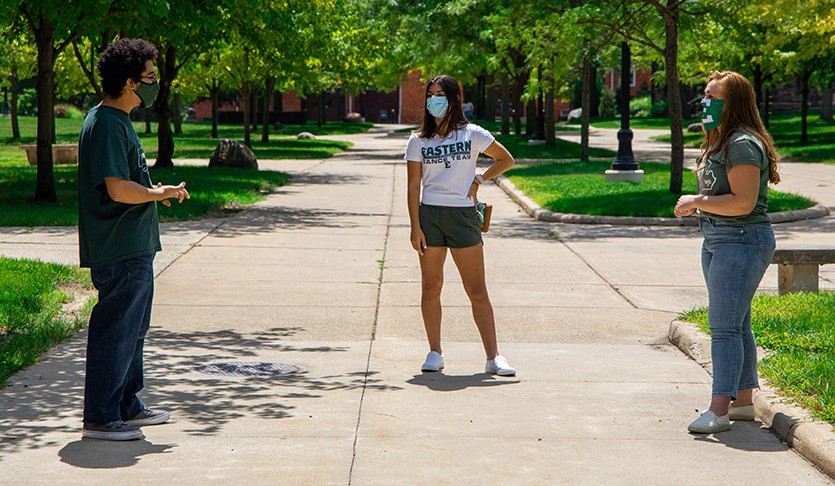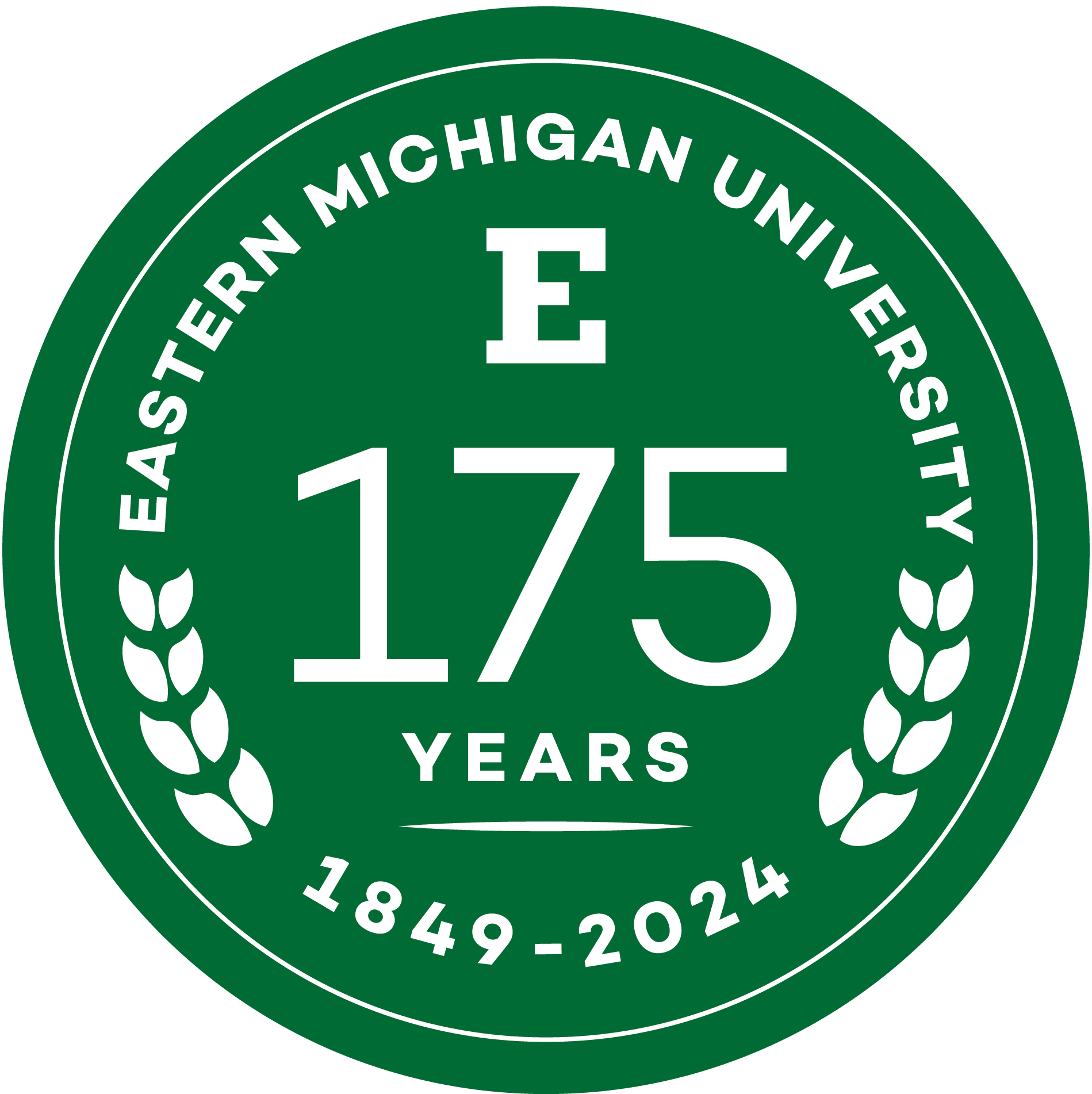Eastern Michigan University’s ‘Safe Return-To-Campus Plan’ includes wide variety of actions designed to ensure a safe learning and work environment

YPSILANTI – Daily health screenings. Face coverings. Physical distancing and greatly reduced density, including in classrooms.
Those are some of the key safety actions included in the Safe Return-To-Campus Plan at Eastern Michigan University.
“The Plan includes a collective commitment to protecting our community, articulating our shared responsibility towards one another, as well as the guiding principles that inform our decisions and actions going forward,” said President James Smith, who announced the plan Friday, August 7. “As we have expressed many times over the past months, the health and safety of our community is our highest priority. The well-being of our students, faculty and staff is our guiding principle in every action we take.”
The plan features a wide variety of actions that are being implemented at Eastern to provide a safe environment.
“Until a vaccine is developed, any single measure, standing alone, is likely insufficient to slow the spread of COVID-19,” President Smith said. “The University will therefore take a layered approach in using multiple strategies that, together, will make our campus community safer by reducing the spread of COVID-19.
“Following all health protocols in conjunction with each other dramatically reduces your risk of contracting COVID-19 and that of other campus members as well. These requirements are therefore designed to overlap and reinforce each other and must be observed in their entirety.”
Among the measures in the plan:
Daily health screening for students and employees
All students and employees present on campus will be required to complete a daily screening process to identify potential symptoms of COVID-19, a strategy that has been used effectively by hospitals, retail stores, and other organizations. The system requires everyone’s participation to succeed, and compliance will be verified at check-in stations located at the entrance to buildings.
Face coverings
Everyone on campus (e.g., students, faculty, staff, and visitors) will be required to wear a face covering that covers both the nose and mouth while inside all University buildings and on campus grounds. Individuals will not be required to wear a face covering in a private office with the door closed, in private living space with a door closed, or in some other isolated spaces such as when alone inside a vehicle.
Physical distancing
Whenever practical, all individuals on University grounds must maintain physical distance of six feet or more from other individuals who are not part of their household. Although on-campus housing roommates are part of the same household, these standards will apply in campus housing common areas.
Reduced density of individuals on campus
Campus offices and student services will continue to operate in a mix of formats, including in-person, by appointment only, and online, a move designed to significantly reduce overall traffic within buildings. Office hours and in-person meetings will continue to be reduced and limited as well. Traffic patterns within buildings will be prescribed in order to support the maintenance of physical distancing requirements. In most buildings, swipe card/appointment only access will be maintained except at the appointed entrance for student access.
Cleaning and disinfecting
All public areas in campus buildings (e.g., restrooms, hallways, classrooms, offices) are subject to frequent and in-depth cleaning. For example, disinfectant electrostatic fogging is used in large areas and spaces that are difficult to clean using traditional methods (such as locker rooms), and touch points (e.g., light switches, elevator buttons, desks, and door handles) are cleaned on a daily basis.
Class instruction
Course sections will be delivered in-person, online, or in a hybrid format. Decisions about how individual course sections will be delivered have been made at the college and department level to ensure that each course’s pedagogical needs are addressed and that students receive access to the excellent education they expect. Classroom space will be extremely limited in the fall because of physical distancing standards. A substantial majority of class sections will be offered in an online or hybrid format.
The Safe Return to Campus Plan also includes information about plans for dining, housing, athletics, travel, and visitors and guests, among other information.
President Smith said that the details surrounding EMU’s phased safe return to campus will continue to evolve.
“The safety actions will be updated as we learn more about the most effective ways to mitigate the spread of COVID-19, as government regulations evolve, and as new decisions are made,” he said.
About Eastern Michigan University
Founded in 1849, Eastern is the second oldest public university in Michigan. It currently serves nearly 18,000 students pursuing undergraduate, graduate, specialist, doctoral and certificate degrees in the arts, sciences and professions. In all, more than 300 majors, minors and concentrations are delivered through the University's Colleges of Arts and Sciences; Business; Education; Engineering and Technology; Health and Human Services; and, its graduate school. EMU is regularly recognized by national publications for its excellence, diversity, and commitment to applied education. For more information about Eastern Michigan University, visit the University's website.
More Stories

Eastern Michigan University awards Summer Research and Creative Activity Grants.

Eastern Michigan University to launch new Bachelor of Business Administration in Financial Planning and Wealth Management degree.

Eastern Michigan University empowers student-faculty collaboration with Undergraduate Symposium Research Fellow Awards.

Eastern Michigan University senior Raya Lasiewski inspires hope and healing through personal journey with eating disorder.

Veteran exceeds limits to becoming an Eastern Michigan University graduate.

